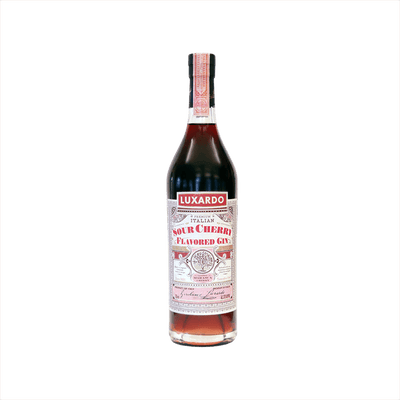Berry-Flavored Gin
What is Berry-Flavored Gin?
Berry-flavored gin is a specific category of flavored gin that incorporates various berries—such as blackberries, raspberries, strawberries, or blueberries—into the distillation or infusion process. These gins maintain the classic juniper backbone while adding sweet, tart, and sometimes jammy notes from the berries, creating a spirit that balances botanical complexity with fruity character. The berry additions can range from subtle hints that complement the traditional gin profile to bold, forward flavors that make the fruit the star of the show.
Learn More About Berry-Flavored Gin
What makes Berry-Flavored Gin unique?
Berry-flavored gin stands apart from other flavored gins through its ability to balance tart and sweet elements while maintaining the botanical backbone that defines gin. Unlike citrus-forward variations that rely on bright acidity or floral gins that emphasize delicate aromatics, berry gins bring a rich, jammy complexity that can range from the sharp bite of juniper berries to the luscious sweetness of elderberries or blackcurrants. This category offers distillers the chance to create spirits that feel both familiar and wild, capturing the essence of summer fruit picking while respecting gin's traditional herbal foundation.
How is Berry-Flavored Gin made?
Berry-flavored gin starts with a traditional gin base that's infused with fresh or dried berries like blackberries, raspberries, or elderberries through maceration, where the fruit steeps in the neutral spirit for several days to extract color and flavor. Some distillers add the berries during the distillation process itself, allowing the berry essences to come through in the vapor, while others use a combination of both methods for complexity. The final product balances the botanical backbone of juniper with the sweet-tart notes of the chosen berries, often requiring careful filtration to achieve the desired clarity and color.
How do you drink Berry-Flavored Gin?
Berry-flavored gin shines brightest in cocktails where its fruity character can play well with complementary ingredients, though some premium expressions work beautifully over ice with a splash of tonic or soda. You'll find it particularly at home in gin and tonics, fizzes, and summery cocktails that call for fresh citrus, herbs like basil or mint, or other berry elements. The sweet-tart profile makes it perfect for warm weather entertaining, garden parties, and any time you want a drink that feels both sophisticated and approachable.
How do I choose good Berry-Flavored Gin?
Start by checking the ingredient list – the best berry gins use real fruit or natural extracts rather than artificial flavoring, which shows up as a cleaner, more authentic taste. Consider what you're mixing: if you're making a simple gin and tonic, go for something with bold berry presence that won't get lost, but for complex cocktails like a Aviation or Negroni variation, choose a more subtle berry gin that complements rather than competes with other ingredients. Taste the gin neat first if possible – quality berry gins maintain that classic juniper backbone while adding fruit notes, rather than tasting like flavored vodka with a hint of pine.
Nutritional Information
Typical Calorie Range per Ounce: 64-75 calories
Typical Carbohydrate Range per Ounce: 0-3 grams
Typical Sugar Range per Ounce: 0-2 grams
Typically Gluten Free: Yes
Most berry-flavored gins fall within this range, though flavored varieties may contain slightly higher carbohydrates and sugars than traditional gin due to added natural flavors or sweeteners. The calorie content comes primarily from the alcohol itself, which contains 7 calories per gram.
While gin is generally made from grain-neutral spirits, the distillation process typically removes gluten proteins, making most gins suitable for those avoiding gluten. Always check the specific product label and manufacturer information to confirm gluten-free status, especially if you have celiac disease or severe gluten sensitivity.
Scrolled this far? Your reward? Berry-Flavored Gin Trivia!
- The first berry gin wasn't made with fresh fruit at all—it was created in 1906 using concentrated berry syrups originally designed for soda fountains. A clever distiller in Bristol realized these intensely flavored syrups could infuse gin with berry notes that lasted months longer than fresh fruit versions, which often turned muddy and bitter within weeks.
- Hendrick's famous cucumber and rose combination was actually inspired by a failed blackberry gin experiment. Master distiller Lesley Gracie was trying to create a blackberry-infused gin in the 1990s when she accidentally added rose petals to the wrong batch. The floral notes reminded her of an English garden, leading her to scrap the berry idea entirely and create one of the world's most recognizable gins instead.
- Juniper berries—the defining botanical in all gin—aren't actually berries at all, but tiny cones from juniper trees. This means that technically, every gin is already a "berry" gin, though calling them berries is a botanical misnomer that's stuck for over 300 years. True berry gins add actual fruit berries on top of these juniper "berries."
- The purple color in many berry gins comes from a chemical reaction that happens only in the presence of alcohol above 40% ABV. Anthocyanins in dark berries like blackberries and elderberries create deeper, more stable colors in high-proof spirits, which is why berry liqueurs at lower proofs often look pale pink while berry gins maintain rich purple hues.
- Craft distillers have discovered that freezing berries before infusion actually breaks down cell walls and releases 40% more flavor compounds than using fresh fruit. This technique, borrowed from ice wine production, means that frozen strawberries from your grocery store can produce more intensely flavored gin than expensive fresh berries from the farmer's market.
Higher-proof spirits can be intense. Mix carefully, taste thoughtfully, and enjoy responsibly.
Gift message (optional)

